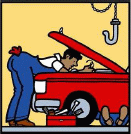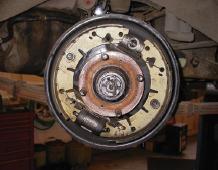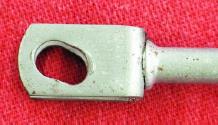 |
 |
 |
 |
 |
| |
 Tech Talk: Diagnosing Classic Brakes
Tech Talk: Diagnosing Classic Brakes
Carl By Carl Heideman
Story and Photography by Carl Heideman
When it comes to classic car brakes, most people set their expectations way too low. The truth is, most machines built after World War II should have good brakes: a firm pedal that travels no more than an inch and a half while delivering straight, confident stops during normal driving.
Yes, a lot of classic car braking systems have more than one issue, but two other factors also plague their reputation. One of the biggest problems is that so many hands have touched our classics—hands that have probably made mistakes and improvised fixes in your car’s past, and passed those issues down to you. Another problem is that classic cars tend to sit, meaning their brakes don’t get exercised and corrosion is allowed to set in. Added together, these issues can make driving your car the wrong kind of thrilling. Here’s what to look for in a braking system.
BRAKING SYSTEM CHECKLIST
|
| |
Brake issue?<.b> |
| |
The problem may be something simple: This drum system recently received new shoes and wheel cylinders, but the rear shoe was fitted upside down. |
 |
|
| |
Does each wheel have a working brake?
|
| |
With the car jacked up and an assistant in the driver’s seat, make sure that each wheel truly stops rotating when the brake pedal is engaged-and that it spins freely when the pedal is released. An amazing number of classics will fail this test. Usual causes are seized pistons in wheel cylinders or calipers, plugged flex lines, and crushed hard lines. (Tow hooks crush a lot of rear-axle brake lines.) Even if each wheel does stop rotating, check to see that each piston is working-sometimes one is seized and the brake sort of works, but not perfectly.. |
| |
Is there excessive wear or free play in the linkages? |
| |
There are several linkages tied together with pins and clevises in most brake systems. Just a little wear in each part can make a brake pedal stop nearly at the floor, even though everything else is okay.
This clevis (below) is worn-out. Given that this car’s pedal has a 6:1 ratio, that quarter-inch of play will add up to an additional inch and a half of pedal travel. |
 |
|
|
Is the fluid clean, clear and properly bled? |
|
Most people who think they bled their brakes three years ago aren’t correctly remembering and actually did it 10 years ago. If the fluid is even a bit brown (below), bleed the brakes and replace all of the fluid. |
 |
|
| |
Is everything assembled correctly?
|
| |
Drum brake systems, especially with self-adjusters, are commonly assembled incorrectly or without all of the parts. Use a factory manual to make sure everything is where it should be, how it should be.
|
| |
Is everything adjusted correctly? |
|
| |
Most brake systems have adjustments at the drums and at the master cylinder or pedal clevis. Even self-adjusting systems sometimes need an initial manual tweak when parts are replaced. |
|
| |
Editor’s Note: Article first appeared in Classic Motorsports Jul 12, 2021
https://classicmotorsports.com/articles/tech-talk-diagnosing-classic-brakes/
|
|